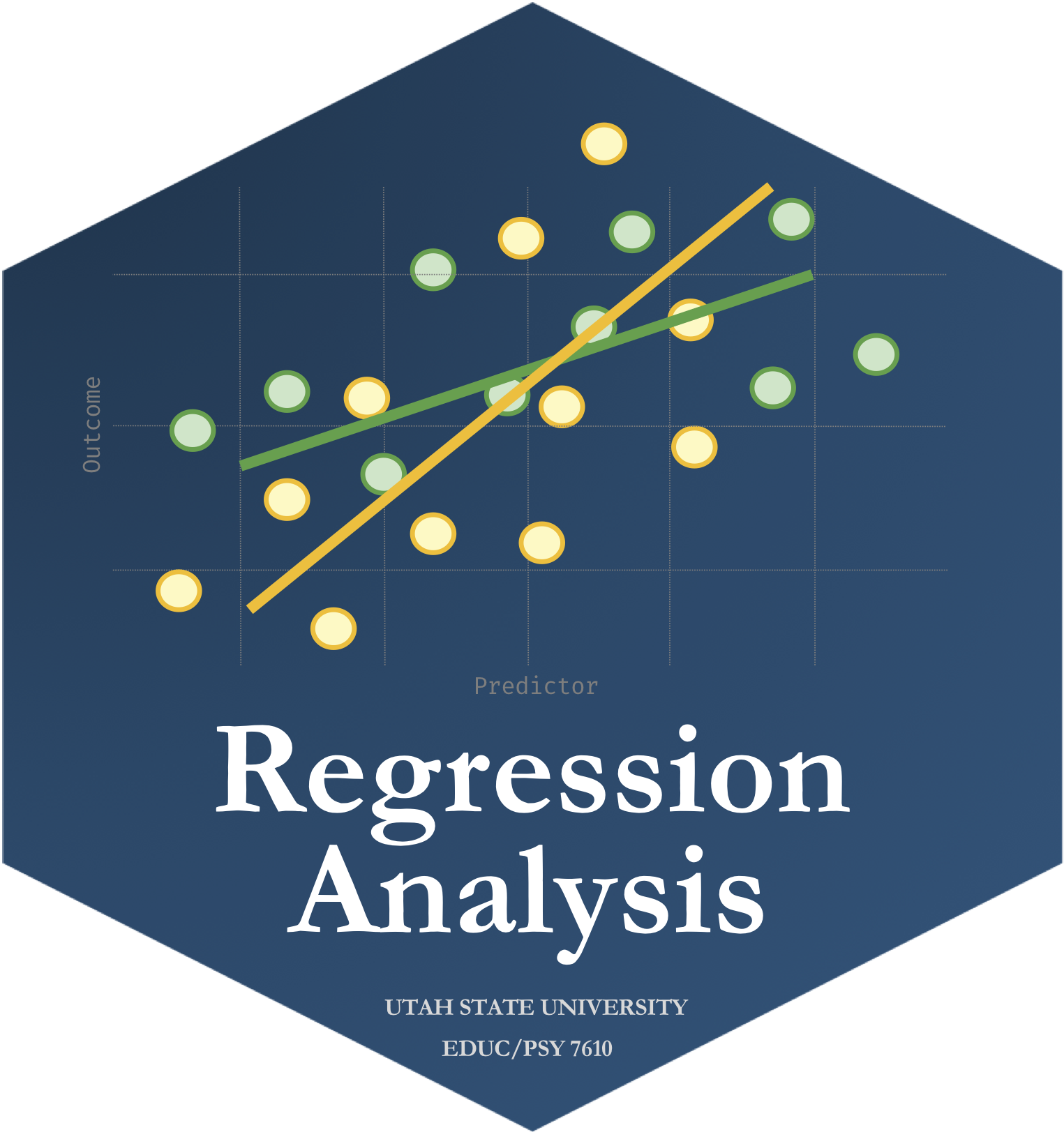
Regression Analysis
This class is all about applying regression analysis and linear models, including generalized linear models, mediation and moderation, with a little bit of machine learning techniques thrown in. The book we’ll use throughout the class, and that drives the structure of the lecture slides, is Regression Analysis and Linear Models by Richard Darlington and Andrew Hayes. This course uses R and RStudio for all data analyses.
We will use several different data sets during the course:
- A subset of the General Social Survey
- A data set used in Quas et al. about high risk youth data set
- A data set regarding poverty, violence, and teen birth rates per state
- A small (ficticious) data set about The Office (US) and Parks and Recreation television shows
- A data set about the passengers of the titanic
- A fictious data set about the “Married At First Sight” TV show
We may also pull from FiveThirtyEight’s open data on GitHub occassionally throughout the class (many of these data sets can be used for your class project as well if they have both continuous and categorical predictors).
Syllabus
Class Materials
Unit 1
| Lecture | Slides and Materials | Recorded Lecture |
|---|---|---|
| L0: Intro to the class | PPTX | |
| L1: Intro to R and RStudio | HTML | Intro to R |
| L2: Causation | PPTX | Causation |
| L3: Simple Regression | PPTX | Simple Regression |
| L4: Multiple Regression | PPTX | Multiple Regression |
| L5: Categorical Predictors | PPTX | Categorical Predictors |
Unit 2
| Lecture | Slides and Materials | Recorded Lecture |
|---|---|---|
| L6: Statistical Inference | PPTX | Inference Part 1 & Inference Part 2 |
| L7: Model Diagnostics | PPTX | Diagnostics Part 1 & Diagnostics Part 2 |
| L8: Missing Data & Such | PPTX | Missing Data |
| L9: Threats to Validity | PPTX | Threats to Validity |
Unit 3
| Lecture | Slides and Materials | Recorded Lecture |
|---|---|---|
| L10: Effect Sizes | PPTX | Effect Size |
| L11: Linear Interactions | PPTX | Interactions Part 1 & Interactions Part 2 |
| L12: Nonlinear Relationships | PPTX | Nonlinear |
| L13: Intro to GLMs | PPTX | Intro to GLMs |
Unit 4
| Lecture | Slides and Materials | Recorded Lecture |
|---|---|---|
| L14: Logistic Regression | PPTX | Logistic Regression |
| L15: Other GLMs | PPTX | Other GLMs |
| L16: Mediation Analysis | HTML | Mediation Analysis |
| L17: Miscellaneous | PPTX |
Final Project
Here’s an example of a final project from a few years ago. This follows the template well but doesn’t necessarily have all the stuff in it (e.g., they could have included a DAG, a plot of the data other than the diagnostics), but this shows understanding of the material so it receive a high grade.
